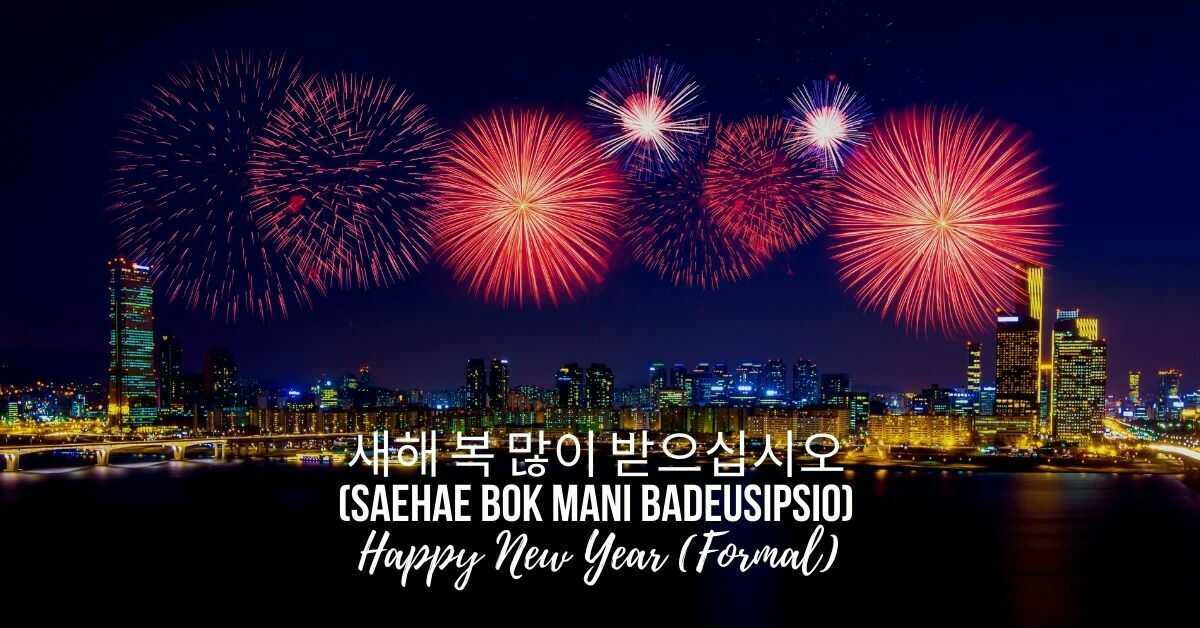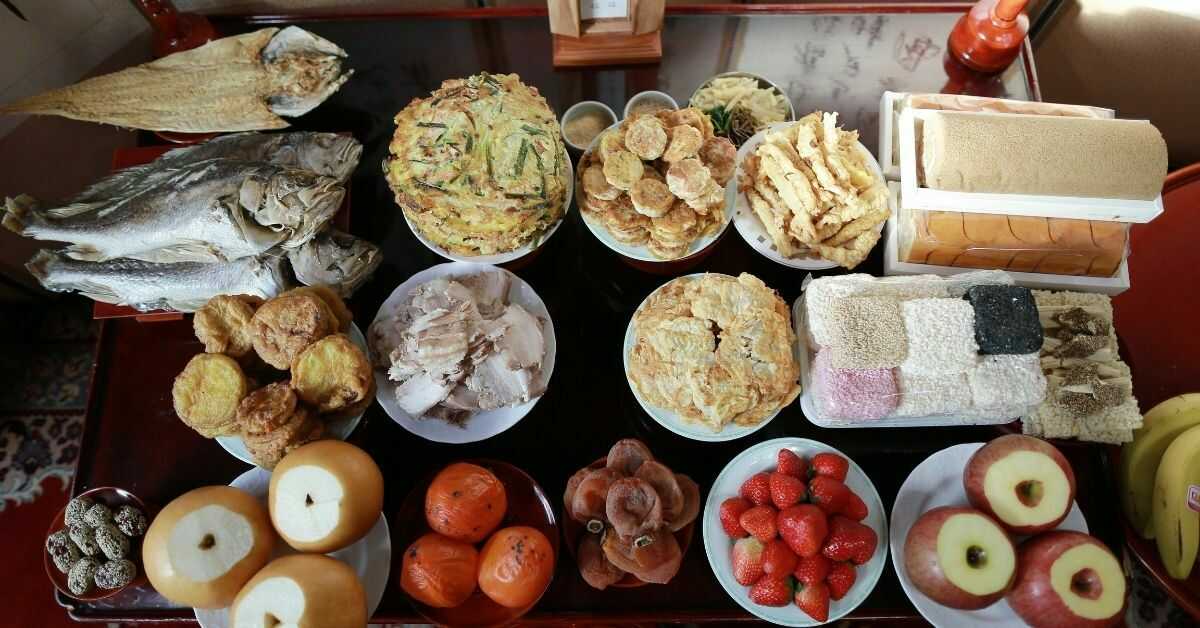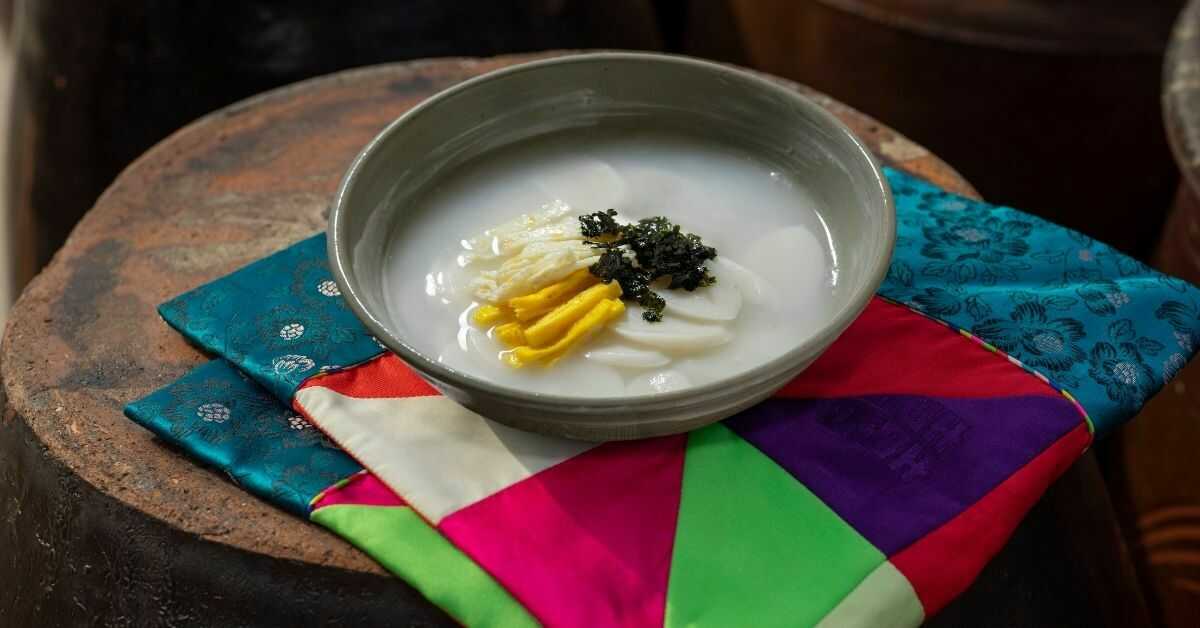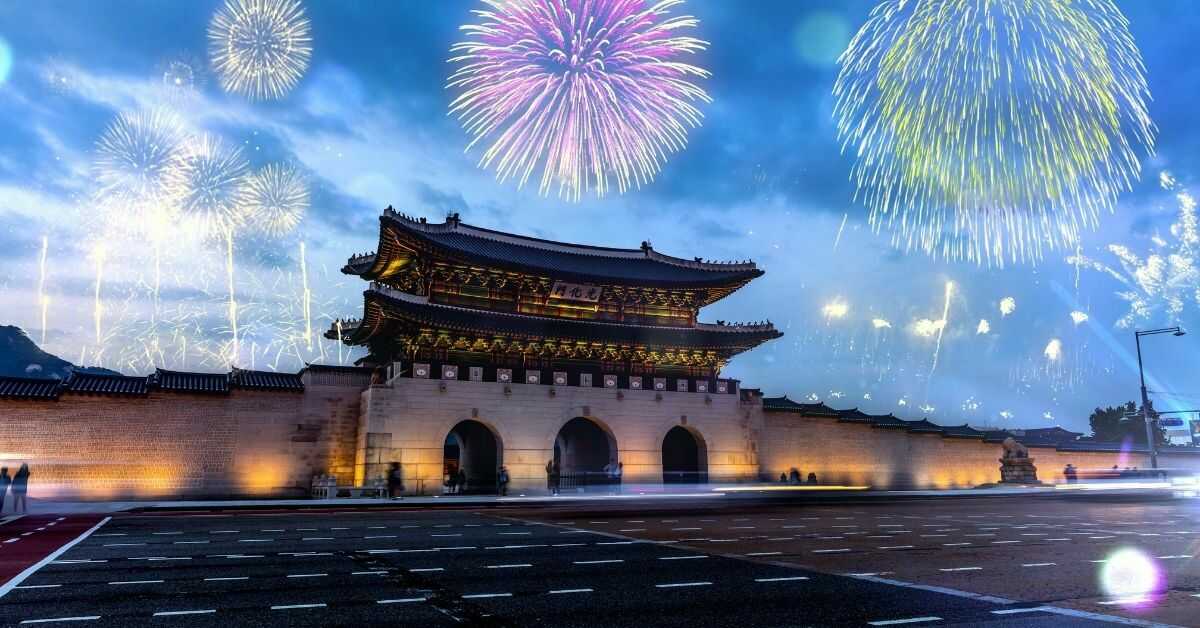4+ Heartfelt Korean New Year Greetings You Should Know – Ling App
As one of the grandest celebrations in Korean culture up until today, Korean New Year 설날 Seollal has festive traditions and touching Korean New Year greetings.
In most of the country, the new year represents new beginnings and new hope. Most New Year celebrations include family gatherings, exchange gifts, and of course, greeting and wishing good fortune and good luck to people around you.
In this blog, we will learn some Korean New Year greetings that you can use to greet your Korean friends. We will also learn some New Year’s traditions in Korean culture, traditional food, and different places in South Korea where you can spend your New Year. You will also learn some New Year-related Korean words and phrases as well as different New Year’s resolutions in the Korean language.
Common, let’s discover how Koreans celebrate New Year.
Mục Lục
How To Say Happy New Year Korean?
Celebrations are not complete without heartwarming greetings. After learning about the Korean New Year and the traditions behind it, let us now learn some Korean New Year greetings that you can say to your friends and family.
Formal Korean
The formal form of the Korean language is used for elders and for people who are in a higher social hierarchy; thank you. It is used in formal situations, and you should always remember that Koreans strictly follow their politeness level. You should study this and keep this in mind to avoid offending someone.
1. 새해 복 많이 받으십시오 (Saehae Bok Mani Badeusipsio)

The first among the Korean New Year greetings that we will learn is 새해 복 많이 받으십시오 (Saehae Bok Mani Badeusipsio). This greeting is made of 새해 (saehae) which means “new year,” 복 (bok) means “luck,” 많이 (mani), means many, and 십시오 (sipsio), which is the extra formal version of the word 받다 (batda) which means “to receive.”
This form of Korean greetings can be used in cards and spoken greetings. If you notice the words used in this Korean new year greetings, you can imply that wishing someone good luck is important for Koreans. A new year symbolizes a new beginning and a fresh start. It encourages a person to do better than the previous year.
Standard Korean
The standard Korean is used in most situations. This form of Korean language is not too formal and not informal either. You’ll notice that Koreans add the word 요 (yo) in the end to make it sound polite.
1. 새해 복 많이 받으세요 (Saehae Bok Mani Badeuseyo)

The first standard Korean New Year greetings that we will learn is 새해 복 많이 받으세요 (Saehae Bok Mani Badeuseyo). It is the same as the previous one, but it uses the honorific form of the word 받다 (batda), which is 받으세요 (Badeuseyo) to sound polite.
2. 행복한 새해 되세요 (Haengbokan Saehae Doeseyo)
Another Korean New Year greetings that you should learn is 행복한 새해 되세요 (Haengbokan Saehae Doeseyo) which means “Have a happy New Year!”. Wishing someone happiness is a nice thing to do. We all want to be happy in our lives. Because of our struggles, some people hope the next year will be different from the previous year. It is an opportunity for them to reimagine their lives.
Informal Korean
The informal form of the Korean language is only used for people that are close to you, like your friends, boyfriends, or girlfriends. But sometimes, people in a relationship, especially those who just started, prefer it to be polite with each other. Informal Koreans should not be used in formal situations, especially when you’re talking to elders.
3. 새해 복 많이 받아 (Saehae Bok Mani Bada)

The last Korean greetings that we will learn is 새해 복 많이 받아 (Saehae Bok Mani Bada). It is the same as the first two greetingS. The only difference is it doesn’t contain honorifics to make it polite. It just uses the word 받다 (batda), making it informal.
Other Korean New Year Greetings!
After learning the Korean New Year greetings, there are also holiday greetings that you can use. You can add it after the Korean New Year greetings that you have learned above to make it sound more sincere. Remember that the 신정 (Sinjeong) or Korean Solar New Year is just a week later than Christmas, so you can still feel the holiday season in Korea. So, here are other Korean New Year greetings that you can consider.
1. 휴일 잘 즐기세요! (Hyuil Jal Jeulgiseyo!)
English Translation: Enjoy the holidays!
2. 행복한 휴일 보내세요! (Haengbokan Hyuil Bonaeseyo!)
English Translation: Happy holidays!
3. 내년에 뵙겠습니다! (Naenyeone Boepkketsseumnida!)
English Translation: See you next year!
4. 겨울 휴가 잘 보내세요! Gyeoul Hyuga Jal Bonaeseyo!
English Translation: Have a great winter vacation!
New Year In Korean Culture
Before anything else, we should learn that Koreans celebrate two new years that are based on the Lunar Calendar and Solar Calendar. The first one is 신정 (Sinjeong) which is the Korean Solar New Year and the 설날 (Seollal), which is the Korean Lunar New Year.
신정 (Sinjeong)
The Korean Solar New Year is celebrated on January 1st. Koreans do not celebrate 신정 (Sinjeong) as grand as 설날 (Seollal) or the Lunar New Year’s Day. However, families and close friends still gather on the New Year’s eve of 신정 (Sinjeong) to welcome the new year.
During 신정 (Sinjeong), Koreans usually attend the traditional Bell Ceremony (보신각타종행사) in Bosingak (보신각) located in Seoul. This bell has a rich history because it was in the center of the castle during the Joseon dynasty (조선시대). But, in this modern time, they do not use the original anymore; instead, they use a replica to preserve the original one.
구정 (Gujeong)
Did you know that during the Korean Lunar New Year, every Korean ages a year older? This is just one of the interesting things about Korean culture. In South Korea, history books have records of Koreans celebrating 설날 (Seollal) as early as 488 during the Silla Kingdom. 설날 (Seollal) is held during late January (or early February), based on the moon’s monthly cycles. The holiday usually lasts for three days: the day before, which is the preparation, the actual day, and the day after.
During 설날 (Seollal), the whole family gathers to celebrate the new year. There are lots of people going home to their families so expect heavy traffic situations during this time. It is one of the grandest celebrations in Korean culture, and the colorful traditions will really amaze you.
차례 (Charye)
During 설날 (Seollal), Koreans pay respect to their ancestor through ancestral rituals called 차례 (Charye). They set out food in front of the pictures, names, or tablets of the deceased. By bowing deeply to these tablets, shows how Koreans pay respect to their ancestors.

세배 (Sebae)
The most important part of Korean New Year is the 세배 (Sebae), where younger family members wish their elders good fortune and stay healthy for the coming year. In 세배 (Sebae), Koreans kneel on the ground and bow deeply, touching their hands to the ground. Remember, in Korea, and younger people must bow deeply as a sign of respect and wish them a happy new year.
While bowing, they say “새해 복 많이 받으세요 (saehae bok mani badeuseyo)
” or “Have lots of luck in the new year’. They usually wear 한복 Hanbok or traditional Korean clothing while performing this ritual.
After the younger people give their respect, elders will provide words of wisdom and wishes. For example, elders usually say, “I hope you maintain good health this year” or ‘I hope you get married this year.” Then, they will give 세뱃돈 (sebaetdon) or money to the youngers, which is often given through an envelope.
떡국 (Tteokguk)
After the rituals, families will eat 떡국 (Tteokguk), which adds one year to their age.
Korean New Year Dishes
1. 떡국 (Tteokguk)
On Seollal, everyone ages by one year, and the procedure wasn’t complete until you ate a bowl of tteokguk. Teeokguk (rice cake soup) filling soup. It is cooked with disc-shaped rice cakes in a broth.

2. 만두국 (Manduguk)
만두국 (Manduguk) is also a delicious soup, but it is made up of homemade mandu.
3. 전( Jeon)
전(Jeon) is a Korean pancake. There are different kinds of 전( Jeon) that are served during New Year’s Day, like kimchi jeon, buchujeon (garlic chive), and saengseon jeon (fish).
4. 잡채 (Japchae)
The Korean glass noodles or 잡채 (Japchae) are present on most special occasions. The flavorful taste of 잡채 (Japchae) makes it perfect as a light and healthy appetizer.
5. 갈비찜 (Galbi-jjim)
One of the most popular Korean recipes is galbi-jjim, or braised beef short ribs. It’s a dish cooked with beef short ribs that are frequently served on special occasions. It’s a traditional Korean cuisine for special occasions like Chuseok, New Year’s Day (Seollal), or family birthdays, but you may cook it for any occasion or as a weekend supper.
6. 수정과 (SuJeongGwa)
수정과SuJeongGwa or Korean Cinnamon Punch is a popular traditional drink consumed in South Korea’s festive and big holidays such as New Year and Thanksgiving. It’s thought to aid digestion, which is why it’s frequently provided after eating Korean BBQ at a restaurant.
7. 식혜 (Sikhye)
Sikhye or rice punch is also a traditional sweet Korean made that is served during the festive holidays. It is made of fermented malt and rice, and it is often served as a dessert in restaurants.
How To Spend Your New Year In Korea?

South Korea is already a beautiful place, even on ordinary days. But, it can turn more beautiful and grand during the biggest holidays and celebrations in Korea. As Koreans also celebrate the Christmas season, Korea, especially the big cities like Seoul and Busan, is covered with sparkly lights to make you feel the holiday spirit. So, if you want to spend New Year in Korea, here are things that you can consider.
- Enjoy New Year’s Countdown In Starfield COEX Mall
- The countdown in Lotte World Tower is one of a kind!
- Hear The Ringing Of Bosingak Bell
- Welcome The New Year By Everland’s Countdown Show
- Join The Moulin Rouge Countdown Party
- Witness The Seoul Christmas Festival at Cheonggyecheon Stream
- Catch The First Sunrise at Seongsan Ilchulbong
New Year’s Resolution
Hangul
(Korean)RomanizationEnglish TranslationSound체육관에 더 많이 가기로 했어요cheyukgwane deo mani gagiro haesseoyoI plan to go to the gym more often.
살을 빼기로 했어요sareul ppaegiro haesseoyoI plan to lose weight.
나는 규칙적으로 운동 할 거예요naneun gyuchikjeogeuro undong hal geoyeyoI will exercise regularly.
나는 담배를 끊을 거예요naneun dambaereul kkeuneul geoyeyoI will quit smoking
나는 술을 줄일 거예요naneun sureul juril geoyeyoI will drink less alcohol
나는 식습관을 바꿀 거예요naneun sikseupgwaneul bakkul geoyeyoI will change my eating habits.
나는 새로운 취미를 가질 거예요naneun saeroun chwimireul gajil geoyeyoI will take up a new hobby.
나는 책을 자주 읽을 거예요naneun chaegeul jaju ilgeul geoyeyoI will read more often.
나는 새로운 곳을 여행 할 거예요naneun saeroun goseul yeohaeng hal geoyeyoI will travel to new places.
나는 돈을 저금 할 거예요naneun doneul jeogeum hal geoyeyoI will save money.
나는 텔레비전 보는 것을 줄일 거예요naneun tellebijeon boneun geoseul juril geoyeyoI will watch less TV.
나는 더 부지런 해 질거예요naneun deo bujireon hae jilgeoyeyoI will be more diligent.
나는 자원 봉사를 할 거예요naneun jawon bongsareul hal geoyeyoI will volunteer.
나는 새로운 직업을 가질 거예요naneun saeroun jigeobeul gajil geoyeyoI will get a new job.
나는 남자 친구를 사귈 거예요naneun namja chingureul sagwil geoyeyoI will get a boyfriend
나는 여자 친구를 사귈 거예요naneun yeoja chingureul sagwil geoyeyoI will get a girlfriend
나는 가족과 함께 더 많은 시간을 보낼 거예요naneun gajokgwa hamkke deo maneun siganeul bonael geoyeyoI will spend more time with my family.
Korean Words And Phrases Related To New Year
Hangul
(Korean)RomanizationEnglish TranslationSound새해 첫날saehae cheonnalNew Years Day
섣달 그믐seotdal geumeumNew Years Eve
구정 음식gujeong eumsikNew Year’s meal
연말 연시yeonmal yeonsiNew Year’s Holiday
년nyeonyear
자정jajeongmidnight
파티patiparty
불꽃놀이bulkkotnorifireworks
카운트 다운kaunteu dauncountdown
건배geonbaetoast
샴페인syampeinchampagne
새해소원saehaesowonresolution
퍼레이드peoreideuparade
Make Everyday Count! Learn Korean Now!
Now that you have learned some Korean New Year greeting, I can say that you’re off to a good start. But do you want to make each day count? Well, learn more lessons with Ling App. Learning Korean with Ling App will give you a meaningful language learning journey that will lead you to fluency. Wanna know why?
Ling App is backed with linguistic research and spaced repetition system, which is essential in learning languages. With this feature, activities in Ling App can surely help you develop your language skills and achieve fluency in record time.
You can use what you have learned in conversations so that learning will be effective. Each word and phrase that you will learn is guided by translations, images, and audio recordings from native speakers. This way, you’ll know how to pronounce each word and phrase properly.
Actually, Ling App has much to offer more than this. Why don’t you try it yourself and see how you’ll learn Korean quickly and effectively.
Don’t wait until the new year to arrive. Learn Korean with Ling App now!















![Toni Kroos là ai? [ sự thật về tiểu sử đầy đủ Toni Kroos ]](https://evbn.org/wp-content/uploads/New-Project-6635-1671934592.jpg)


